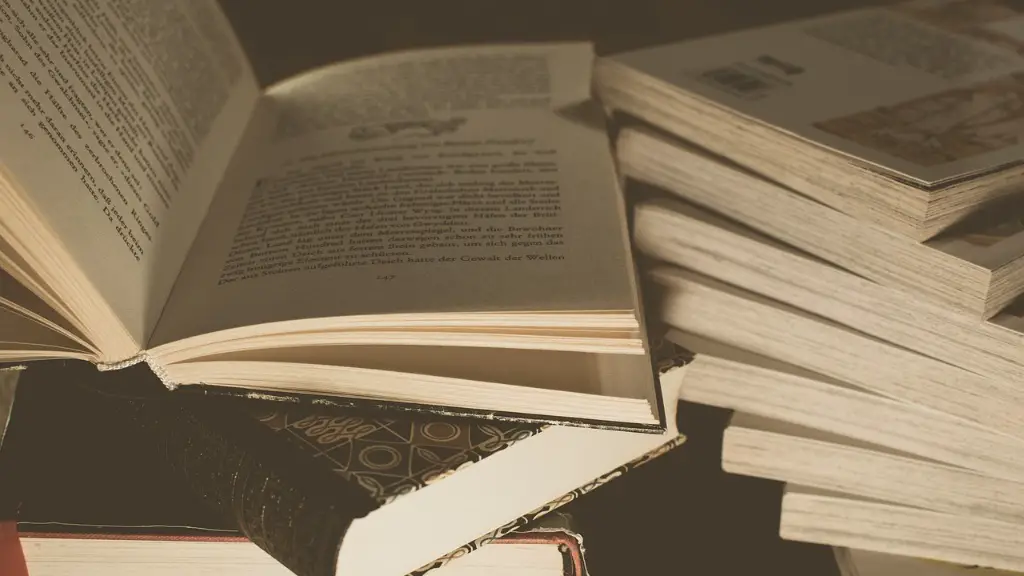Historical Development of Poetry Books
Poetry books have been around for centuries. Some of the earliest surviving poems are found in Egyptian and Babylonian texts, which date back to the 22nd century BCE. During the classical period of ancient Greece and Rome, poetry flourished, manifested in the works of Homer, Virgil, and Ovid, amongst others. As literary practice evolved, poetry books became increasingly popular, with a range of famous authors such as Dante, Chaucer, and Shakespeare. Clearly, poetry books are deeply embedded in the past and present of literature.
Purpose of Poetry Books
Poetry books serve an important purpose in society by providing creative expression and imparting knowledge. Through these books, readers can explore a range of emotions, gain insight into their own struggles, and reflect on the human condition. Poetry books can capture the human experience in a way that is unique, powerful, and timeless.
At the same time, poetry books can be seen as a form of entertainment and leisure. For many people, reading poetry is a pleasant and calming experience, allowing them to disconnect from the world around them and sink into a world of language and imagery. Poetry can also provide respite against the harsh realities of life, allowing readers to tap into emotions and perspectives that offer motivation, comfort, and solace.
Structure, Form and Language of Poetry Books
The structure, form, and language of poetry books are often highly sophisticated. Traditionally, poems are composed in specific forms, such as sonnets and villanelles, and include complex rhyme schemes, meter, and imagery. More recently, contemporary poets have experimented with free verse and fragmentary forms, offering a fresh approach to poetic expression.
The language used in poetry books can be quite elaborate and sophisticated, allowing for greater lyrical beauty than regular prose. Poets often rely on figurative language, such as metaphors and similes, to convey meaning and create vivid imagery. Part of the allure of poetry books is their ability to take abstract concepts and explain them in emotionally resonant and powerful ways.
Celebrities, Musicians and Poetry Books
Many celebrities and musicians today have embraced poetry books as a form of self-expression. From the cartoons of Snoop Dogg and Chance the Rapper, to the romantic musings of Taylor Swift and Lana Del Rey, to the deeply-felt reflections of Paul McCartney and Bruce Springsteen, many artists have found solace in poetry. For example, Lady Gaga recently engaged in a series of spoken word performances, in which she read her own poetry and discussed its deeply personal themes.
Poetry books serve as a medium for celebrities and musicians to comment on topics that matter to them, from love and loss, to politics and social justice. Their ability to connect with audiences, despite their fame and success, echo the timeless messages of poetry books.
Poetry Books and Education
Poetry books can also be used as a tool to teach young people about literature, language, and the power of words. In the classroom, poetry books are an effective way for students to explore topics such as rhyme, meter, similes, and metaphors. Moreover, by engaging with well-known poets, such as William Shakespeare and Walt Whitman, students can gain an appreciation for the history of poetry.
Furthermore, poetry books can play a major role in increasing literacy among young people. By introducing them to the joys of reading, they may be inspired to read more and develop a lifelong love of literature.
Emergence of Digital Poetry Books
The recent emergence of digital poetry books has transformed the way in which poets and readers interact. By providing instant access to poems on mobile devices and computers, digital poetry books offer unprecedented reach and engagement. For instance, popular websites such as Poetry.com have enabled readers to explore thousands of poems, written in English and in other languages.
Furthermore, digital platforms have enabled poets to share their work with a much larger audience and engage in novel forms of collaboration and discourse. Through tools such as interactive forums, social media networks, and book events, poets of all backgrounds can connect with each other, analyse their work, and gain greater recognition.
Implications of Digital Poetry Books
The advent of digital poetry books has allowed for an unprecedented level of creativity, collaboration, and engagement. For example, technology has allow emerging poets to share their work without having to incur significant costs. As such, digital platforms have created a much more inclusive and accessible publishing environment for Poetry books.
At the same time, digital technologies have also raised questions about the sustainability of traditional publishing practices. The emergence of mobile apps, for example, have shifted consumer preferences away from physical books, towards digital devices. This has had a major impact on the traditional publishing cycle and has forced publishers to rethink their business models and strategies.
Criticism Faced by Poetry Books
Despite the growing popularity of Poetry books, they have also faced criticism. One of the most prominent criticisms is that they are not adequately accessible to the general public. It is argued that poetry books are often overly celebratory of elitism and convention, making them largely inaccessible to those unfamiliar with the topic.
Moreover, many argue that poetry books have become overly detached from real-world contexts, favouring abstract flights of fancy over concrete depictions of reality. While artistic expression is important, it is suggested that poetry books should also delve into topics that are tangible and salient to society.
Use of Poetry Books in Pop Culture
In recent years, Poetry books have gained significant traction in popular culture. The works of contemporary poets such as Rupi Kaur and Warsan Shire, amongst others, have become widely known across the globe. Due to the accessible and emotive nature of these works, they have often been featured in songs and movies.
Kanye West, for example, often features poetic verses in his music and has even released his own collection of poetry books. Similarly, award-winning movies such as ‘Slumdog Millionaire’ and ‘Toy Story 4’ have featured the works of published poets in their soundtracks.
Funding and Accessibility of Poetry Books
Despite their popularity, Poetry books remain a high-cost endeavour, due to their small print runs and limited readership. Consequently, many poets are unable to find the funding required to publish. Fortunately, various grants and awards are available, making it easier for poets to travel and showcase their work.
On a broader level, however, more can be done to make Poetry books accessible to all readers. For instance, libraries and bookstores can provide greater space for poetry books, so that readers of all backgrounds can engage with the genre. This could create a ripple effect and increase the audience base for Poetry books.
Impact of Poetry Books on Society
The impact of Poetry books on society is difficult to quantify, yet it is clear that they take their place within a greater culture of artistic expression. As such, they can be seen to offer a range of benefits, such as promoting creativity, increasing literacy, and providing solace to readers.
Ultimately, poetry books are an important part of the literary landscape and continue to influence the work of future generations of poets. With advances in digital and print technologies, these works can reach a wider audience than ever before. Through this growing access and appreciation, poetry books will no doubt remain an important and treasured part of our culture into the future.

